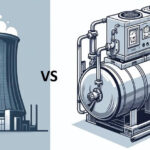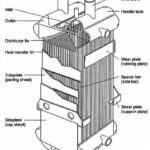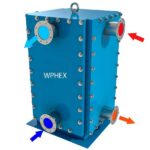Desalination vs filtration, two different processes used to treat water and make it safe for consumption or other purposes.
What is desalination?
Desalination is the process of removing salt and other minerals from saltwater, making it safe for drinking and other purposes. This process is commonly used in areas where there is a shortage of fresh water, such as coastal communities and islands. Examples of desalination methods include reverse osmosis, thermal distillation, and electrodialysis.
What is Filtration?
Filtration, on the other hand, is the process of removing impurities, contaminants, and particles from water, making it safe for drinking and other purposes. This process is commonly used to treat municipal water supplies, as well as industrial and agricultural wastewater. Examples of filtration methods include sand filtration, activated carbon filtration, and microfiltration.
In summary, desalination is used to remove salts and minerals from saltwater to make it safe for drinking, while filtration is used to remove impurities, contaminants, and particles from water to make it safe for drinking and other purposes.
Desalination vs Filtration Examples
As defined earlier desalination is the process of removing salt and other minerals from seawater or brackish water to produce fresh water.
There are several methods of desalination, including:
- Reverse Osmosis (RO): This is the most common method of desalination, where seawater is forced through a semi-permeable membrane that separates the salt and other impurities from the water. The salt and impurities are then removed, and the resulting water is fresh and drinkable.
- Multi-Stage Flash (MSF): In this process, seawater is heated to produce steam, which is then condensed to produce fresh water. The salt and impurities are left behind as the steam is produced.
- Electrodialysis (ED): This process uses an electric current to remove salt and other impurities from the water. The water is passed through a series of membranes, which have a positive or negative charge, depending on the type of ion being removed.
As defined earlier, Filtration, is the process of removing solid particles and other impurities from a fluid. There are various types of filtration processes, including:
- Sand Filtration: In this process, water is passed through a bed of sand to remove particles and impurities. The sand acts as a filter, trapping the particles as they pass through.
- Activated Carbon Filtration: This process involves passing water through a bed of activated carbon, which removes impurities and odors from the water.
- Membrane Filtration: In this process, water is passed through a membrane that traps particles and impurities, leaving behind clean water. This method is commonly used in water treatment plants to remove bacteria and viruses from drinking water.
These are just a few examples of desalination vs filtration processes, and there are many other methods and variations available depending on the specific needs and requirements of a particular application.
Desalination vs Filtration Applications
Desalination and filtration processes have a wide range of applications, including:
Desalination:
- Drinking water production: Desalination is commonly used to produce drinking water in areas where fresh water is scarce or in short supply, such as coastal regions or arid areas.
- Agricultural irrigation: Desalinated water can also be used for agricultural irrigation, providing an alternative water source in areas where freshwater is limited.
- Industrial processes: Desalinated water is also used in various industrial processes, such as power generation, oil and gas production, and semiconductor manufacturing.
Filtration:
- Drinking water treatment: Filtration is a common method of treating drinking water to remove impurities, such as sediment, chlorine, and bacteria.
- Wastewater treatment: Filtration is also used in wastewater treatment to remove impurities and pollutants before the treated water is discharged into the environment.
- Swimming pool and spa water treatment: Filtration is an essential part of maintaining clean and clear swimming pool and spa water, by removing dirt, debris, and other contaminants.
- Food and beverage processing: Filtration is used in the production of various food and beverage products, such as beer, wine, and fruit juices, to remove impurities and ensure product quality and safety.
These are just a few examples of the many applications of desalination vs filtration processes. These processes play a crucial role in ensuring a reliable and sustainable supply of clean water for various purposes.
Hopefully this article cover any questions you still have on desalination vs filtration












